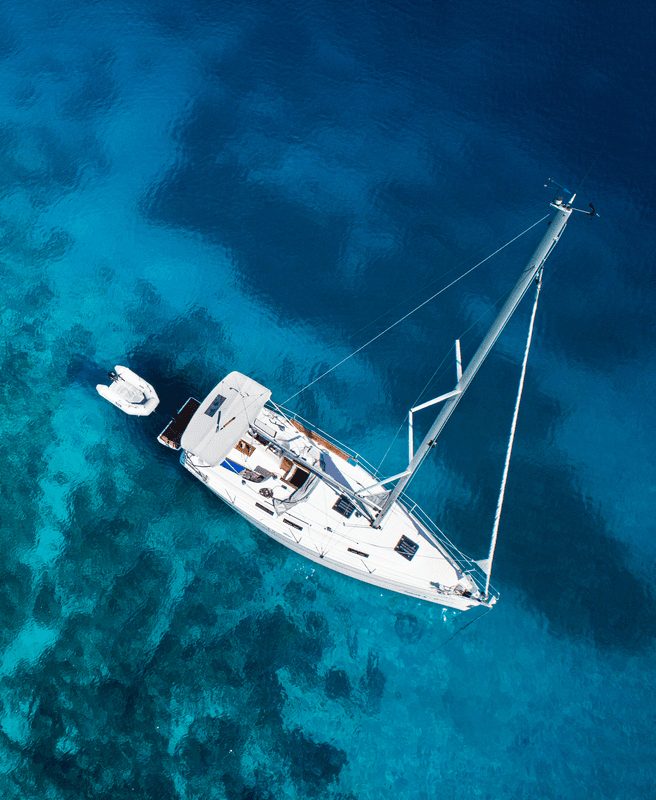How to invest in Irish forestry
October 17, 2022
Dateline: Tirana, Albania
Today I’m in Tirana, Albania and everywhere I look there are incredibly cheap real estate deals. I’m finding land for 25 euros a square meter on the Adriatic Sea. If you want to build a resort, this is a great place to invest. A friend of mine who’s the president of a hotel chain even confirmed that it’s a great deal. It’s one of the last undeveloped beach spaces.
However, if you’re not that interested in investing in the final frontier and want something more developed and less risky, many investors look to forestry to round out and stabilize their portfolios. While many such investors go to locations in Central America, consider something more developed in Europe if you want even less risk. And if you’re considering Europe, I’d suggest you start with Ireland.
All things considered, Ireland is a good country. Yes, they did bail out their banks in 2008 with a bunch of money from people’s retirement accounts, but their heart’s in the right place. When comparing Ireland to the situations in Greece and Cyprus, I look at culture in a country; and the culture in Ireland is very business-friendly.
Plus the people are very friendly. They may not be the hardest working people on planet earth, but they’re not like the Spanish or Italian who prefer to go on strike rather than work. And I think most people would agree that the Irish are pretty amiable people.
So, though it does have a few bad marks, I find Ireland to be a great place for living and — for the right person — investment.
Why Irish forestry?
When it comes to investing in land, I’d have to say that Ireland is one of the better places in the European Union. In fact, a while back I was even considering buying a surprisingly reasonably priced private Irish island.
Thanks to the EU bureaucrats worried about climate change, Ireland offers an investment program in which they will basically pay you to grow trees. You could invest in other European countries, but Ireland’s frequent rainfall, soils and mild climate make it one of the best environments in the world for forestry growth. Many commercial tree species grow much faster in Ireland with yields up to five times greater than in many of the neighboring European countries,
But besides the climate, what’s so great about investing in Irish forestry?
In general, forest investments have strong returns with a low risk to return ratio. Green Belt, Ireland’s largest private forest management company has seen a consistent return from Irish forestry plantations from 5% – 7%.
The other positive characteristic of forestry investment is that it is not correlated to stock market indices. Since biological growth is not affected by economic factors, forestry investments are less volatile. Plus, if you’re not ready to head to the woods and tend to your forest, you can eliminate most investment risks by making your investment through a professional forest management company.
Investors ready to take the plunge will benefit from a government grant scheme that completely covers the costs of the initial planting. An additional annual premium scheme makes it so that investors will be paid an annual income for the following 15 years to reimburse the hypothetical income foregone from planting trees instead of other crops on the land.
And, to put the cherry on the top, the profits earned from clear-felling are not subject to income tax.
The basics of Irish forestry investments
If you’re ready to get started, here are the basics of investing in Irish forestry:
1. Find the right forestry management company
There are a lot of people selling forestry online. I’d suggest you go with one of the ones who have been in the business for a while with a solid track record. Many sites will quote high returns, but if you’re investing in forestry you should be looking for consistency and experience, not astronomical returns. Using a management company is highly recommendable since they will handle everything for you, from obtaining permission to plant to actually planting and maintaining your forest.
2. Find your forest
Apart from managing the land, most forest management companies will source suitable land for afforestation. Consequently, these companies are also a great resource to locate the land you wish to purchase. You can choose to invest in a forest at various stages and with different strategies, including green land, farming the premium and semi mature purchases.
3. Hand over the reigns
The way most forestry investment companies are set up, once you make the investment and get all the paperwork out of the way, they will then plant and manage your forest for you. While the government grant is designed to cover all costs, any potentially uncovered expenses would be the result of high fencing costs. After the initial planting stage, management involves controlling vegetation and replacing dead trees.
4. Receive Forest Revenue
As mentioned, you will receive an annual payment on the part of the Irish government for the first 15 years of ownership. After that time, you can then replace the income from the forestry grants with income from timber products — both through thinning and clear-fell stages when the trees have matured. (And, remember, timber revenue is income tax-free.) According to the management company Veon, “a professionally managed forest can earn you up to €40,000 p/annum over its crop rotation.”
Benefits and downsides
There are some great benefits to the program. The only downside is that you get reduced benefits if you’re not an EU citizen. And, in general, the benefits are going down. You have to hold it for a long time, there are so many exceptions, and the yields aren’t all that great. However, it’s an easy yield.
I like the idea of owning land — whether it’s Irish forestry or a Georgian cattle ranch — it’s a great thing to own. On top of that, Ireland is a very stable country so I would obviously take less yield from Irish forestry than I would from Armenian forestry, for example.
The challenge is that you don’t get credit for residency. Forestry does not count as an investment category in Ireland for a residents permit. So, as much as I think it’s an interesting idea, unless you’re Irish it’s probably not my top investment recommendation.
Nevertheless, it’s worth looking at if you’re considering putting something like this in your portfolio, but you’re a little bit concerned about the Nicaragua, Panama and Costa Rica tree deals (many of which you should be concerned about). Of these Central American programs, there’s really only one that I would recommend and it’s hard to get in, expensive and a bit unpredictable in regards to long term payoff. I’d rather own land in Ireland than in Nicaragua.


Is Land Investment Safer?
When American humorist and writer Mark Twain said, ’Buy land, they’re not making it anymore,’ he was definitely on to something. Land is finite, and that scarcity gives it lasting appeal. Yet, despite its obvious logic, land remains one of the most misunderstood investments. Many people are put off by its perceived complexity, potential legal […]
Read more

Top Emerging Market Economies for US Investors in 2025
If you’re still parking all your capital in overvalued US real estate or clinging to tech stocks in the S&P 500, you’re playing an old game while rivals are redesigning the board. The world has move on. Smart investors know that the biggest returns aren’t coming from Wall Street anymore – they’re coming from below-the-radar […]
Read more

Monaco Real Estate Guide: Market Trends and Opportunities
When it comes to luxury real estate, nowhere does things quite like Monaco. This tiny but ultra-exclusive principality isn’t just a place to live – it’s a global symbol of wealth, prestige and financial freedom. In 2025, Monaco remains the world’s most expensive real estate market, with average property prices soaring beyond €51,000 per square metre […]
Read more




